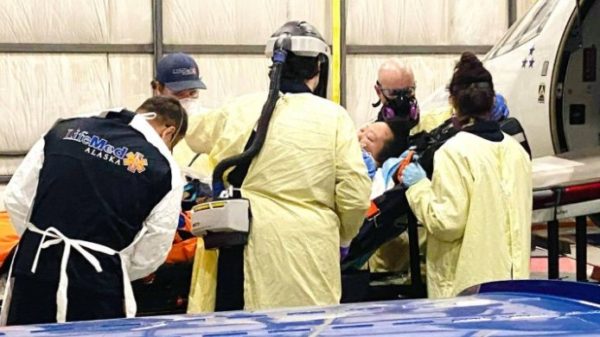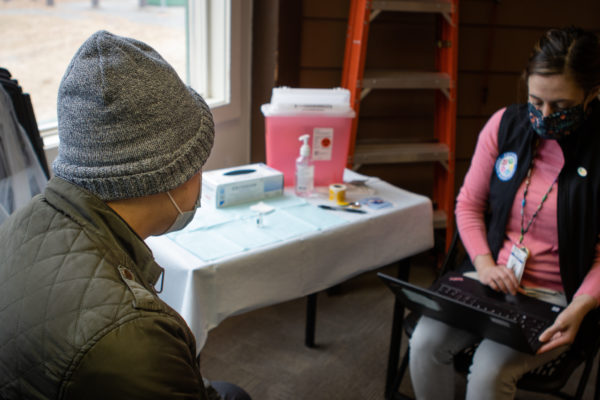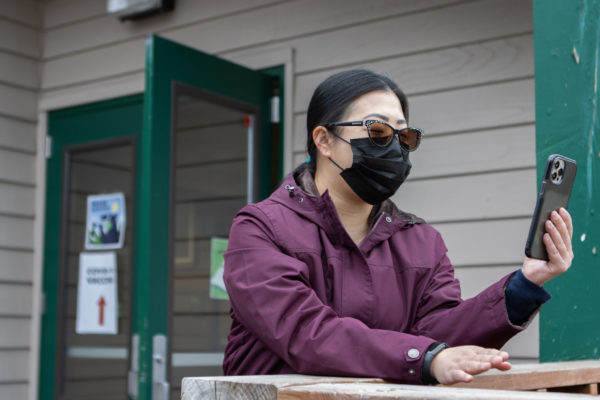
May Ramirez-Xiong, a community organizer, got a call from her sister as she was finalizing the details of a vaccine clinic this week targeting Anchorage’s Hmong residents.
“When she called me from the emergency room and said, ‘Hey, I have COVID, they told me that I have COVID,’ I knew she wasn’t well. But to hear that from her, it just made my heart drop,” she said.
At first, she wasn’t sure how bad it was.
Her sister, 37-year-old Navally, was released from the hospital a few days after her diagnosis. But then Ramirez-Xiong got word through her brother-in-law things had gotten worse.

“I just remember getting a text from my family member saying that she went back to the emergency room,” said Ramirez-Xiong.
Navallay was then flown to a hospital in Oregon. She was on a ventilator there Thursday, fighting for her life.
Ramirez-Xiong said her family struggled to decide whether to publicly share their story. They were concerned that attention could make them targets of anti-Asian hate.
But they eventually decided their story was worth sharing if it could convince more Hmong people in Alaska to be vaccinated. They set up a fundraising page for medical expenses and are asking for prayers from friends and neighbors.
“We never want anyone to be in this situation, to have one of their own fighting for their lives. And we want everybody to be as prepared as possible,” Ramirez-Xiong said.
Convincing some in the Hmong community to get a COVID vaccine can be tricky, according to Yeng Tao, a Hmong translator at the clinic. Part of the difficulty is language. Tao said it’s hard to find Hmong words to articulate the differences between the Pfizer and Johnson & Johnson vaccine, for example.
More difficult still is an underlying cultural preference for traditional treatments. Some in the community, especially the older generation that is more isolated by language, rely on a traditional healer, or shaman, for their health care needs. Some Hmong people are animists, believing physical health is tied to good relationships with the spiritual world.

“The Hmong people get their healing from natural herbs, and Western medicine has been a huge downfall among people since, you know, World War II. So trying to believe in that, it’s kind of hard, whether or not they are Shamanists or Christians,” Tao said.
Along with other volunteers and health department employees, Tao is trying to get accurate information to the community, mostly through social media. They’re livestreaming on Facebook, and interviewing with an influential local YouTuber. It’s helped get more people signed up for Thursday’s clinic, with many wanting the single-dose Johnson & Johnson vaccine.
The health department added offerings of that vaccine after a last-minute surge in demand at the clinic.

But Tao said it’s getting more and more difficult to find Hmong Alaskans willing to get vaccinated.
“I see less people getting it. They’re still afraid of it,” she said.
Organizers aren’t giving up.
Ramirez-Xiong said seeing her sister, who is known for her warm and bubbly personality, debilitated by COVID-19 is a reminder of what’s at stake.
“It’s the hardest thing to see her through FaceTime, struggling and gasping for air, and being told that she she can’t do it on her own and that she needs to be on a ventilator again,” she said. “So I just don’t want that for anyone.”
The title of this story has been updated.
Lex Treinen is covering the state Legislature for Alaska Public Media. Reach him at ltreinen@gmail.com.





